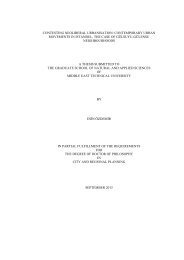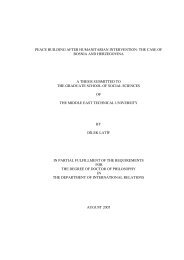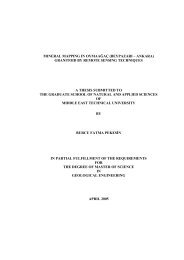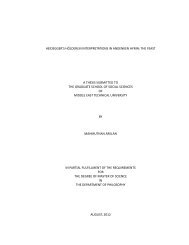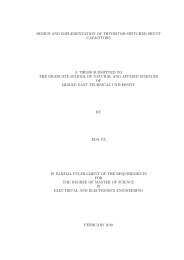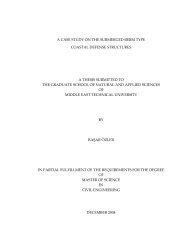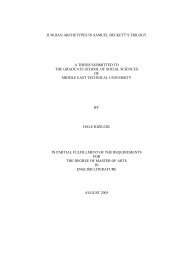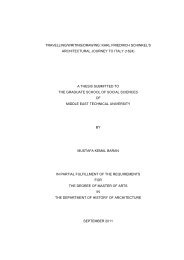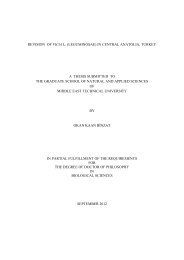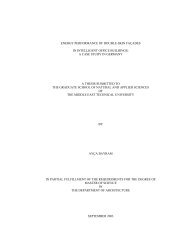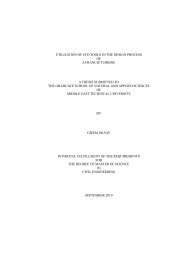View Original - Middle East Technical University
View Original - Middle East Technical University
View Original - Middle East Technical University
Create successful ePaper yourself
Turn your PDF publications into a flip-book with our unique Google optimized e-Paper software.
2002:320). Though in Marxist theory as well as in regulation theory, as a mode of<br />
production, ‘capitalism is defined by the conjunction of two principles of economic<br />
organization’ –namely, a market/commodity relation and capital-labour/wage relation;<br />
and ‘there is not just a single way of organizing these two fundamental relationships<br />
but a degree of variety’(Boyer 1997b:75), it is more specifically at the conceptual<br />
level of the institutional forms that capitalism in the future anterior has been the<br />
quaesitum of regulationist research. For Boyer, these are the exact terms in which an<br />
ex ante analysis of the ‘functional coherence of institutional forms’ as an ‘exercise in<br />
macroeconomic fiction’ contrasts with the ex post regulationist theory of Fordism.<br />
This would foremostly be about the thorough analysis of the changes in institutional<br />
forms and the design of macro-models for the study of the concequences of these<br />
changes upon the regime of accumulation together with a decidedly less economistic<br />
uptake on structural change(1991:109).<br />
Thus regulation theorists further excogitated concepts for the analysis of crisis in real-<br />
time in terms of régulation. Regulationists first borrow the concept of ‘the co-<br />
evolution of institutions’ from evolutionary economics. It technically expatiates on<br />
the mechanism when ‘the resulting developments introduce the elements of a<br />
reconfiguration’, even though there is not de novo any systematic coherence between<br />
the institutional forms. In short, any minimal and/or partial level of systemacity in<br />
some macroeconomic governance stems from this mechanism of institutional ‘co-<br />
evolution’. Institutional complementarity, on the other hand, ‘signifies that the<br />
conjunction of two institutional forms supplies an adaptability and performance that is<br />
superior to alternative configurations in which only one of the forms is present’(Boyer<br />
2002:330-31). Even outside any ‘co-evolution’, therefore circumstances around any<br />
systematic coherence touch upon the fact that often than not ‘a form of constructivism<br />
is at work when forms of economic organization are created, with the result that the<br />
corresponding holistic conception implies that some –the most obvious-<br />
interdependencies between institutions, organizations and the market are being taken<br />
into account’(Boyer 2000:287). Institutional hierarchy in Boyer is about the<br />
‘dominance of one institutional form over another’; here on top of the ex ante<br />
68



